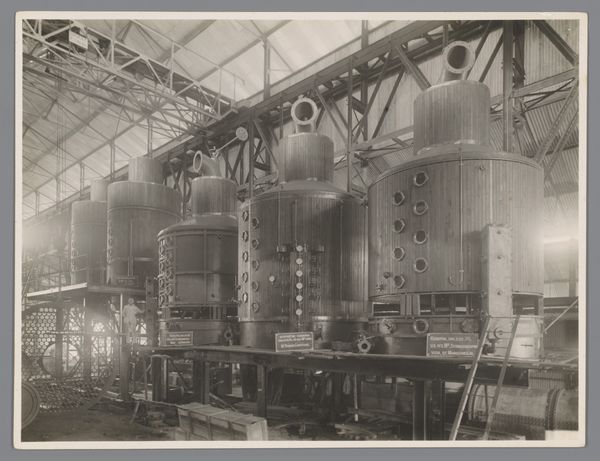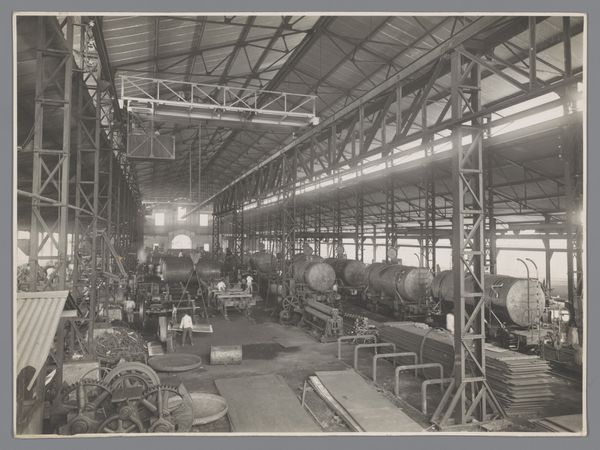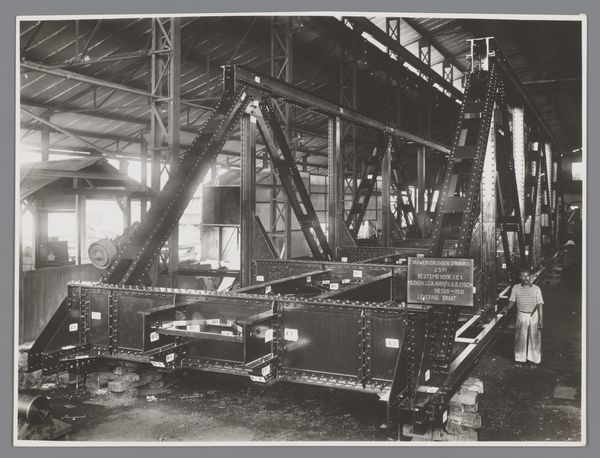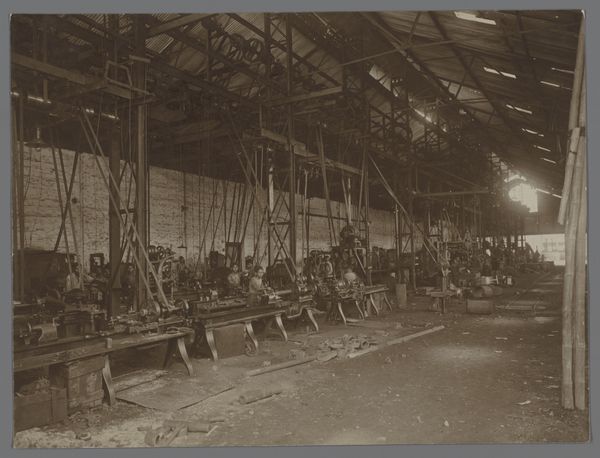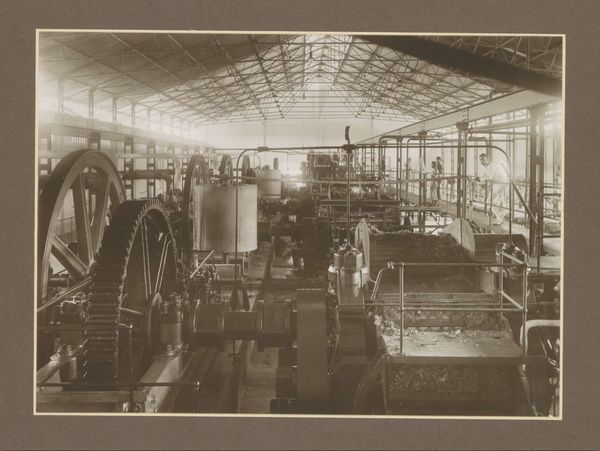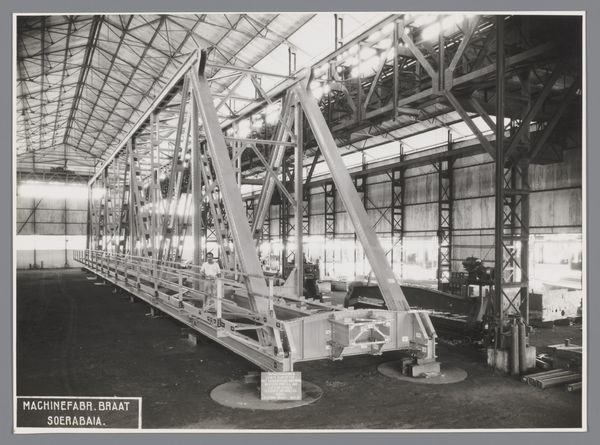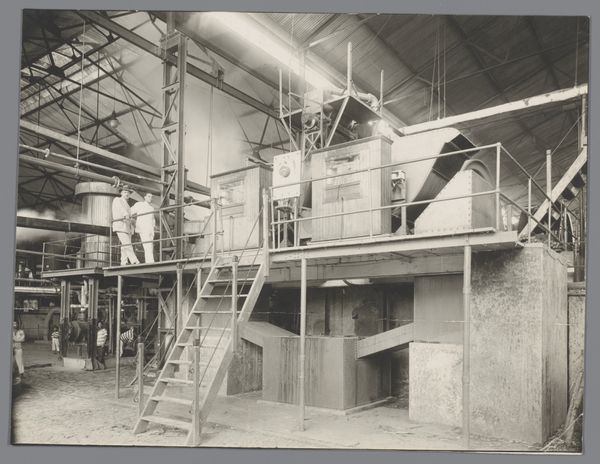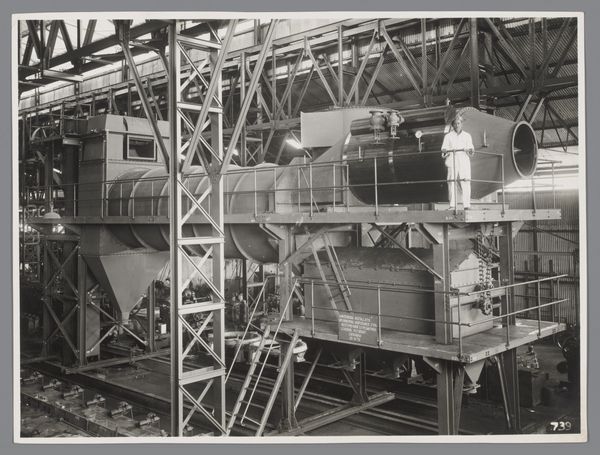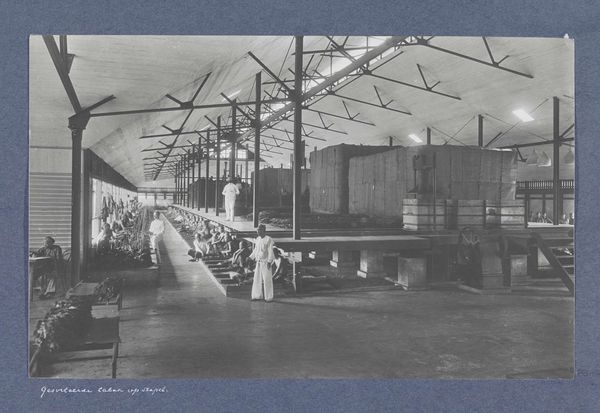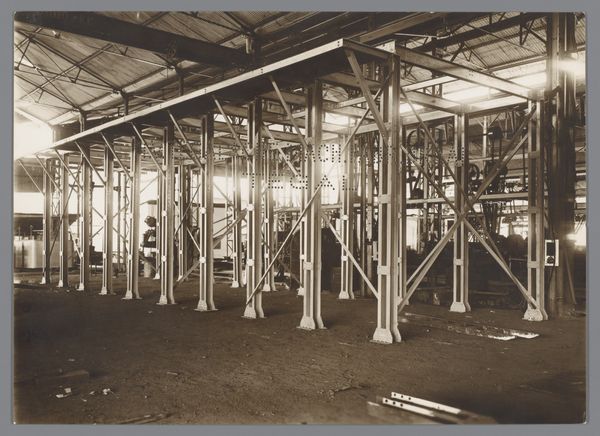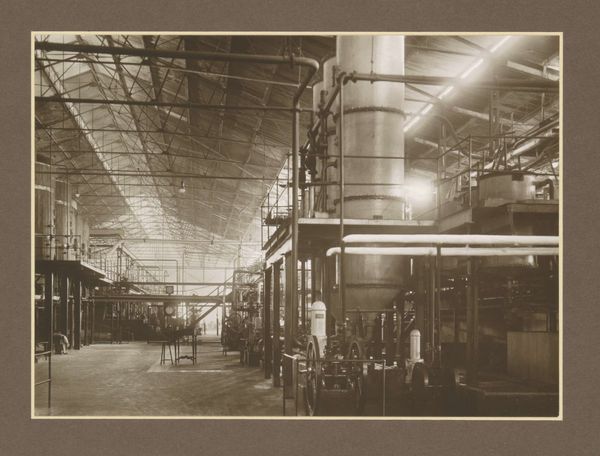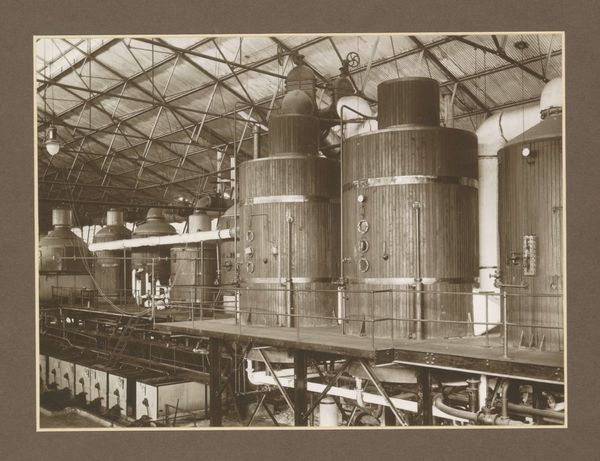
photography
#
photography
#
photojournalism
#
geometric
#
modernism
Dimensions: height 173 mm, width 231 mm
Copyright: Rijks Museum: Open Domain
Curator: This is "Kookpan," a photograph taken sometime between 1917 and 1938. The artist remains anonymous, and it's part of the Rijksmuseum's collection. What's your immediate take? Editor: Bleak. Imposing. A landscape of industrialization, with heavy, repetitive geometric forms dominating the space. It feels… oppressive. Curator: Oppressive, perhaps. But I see an echo of human ingenuity, the will to transform nature. The sugar industry was expanding greatly, creating profound effects on economics and society at the time. Consider what the photograph stands for culturally. Editor: Exactly, but who benefits from all of that industry? Visually, I find the towering, almost inhuman scale to be unsettling. These "kookpans", which appear to be industrial containers used for cooking ingredients like sugar cane juice, have their purpose etched into our past. And in the center of it all, men at the ladders seem almost consumed by the structures. Curator: These workers climbing and standing at those openings provide us with not just a size reference but with their gaze turned toward something outside the image that perhaps represented their livelihoods, community, and place within it all. But consider that in some ways modernism in photography, particularly documentary work, uses sharp lines and unadorned presentation of the world as a means to elevate ordinary subject matters to extraordinary places, just as it seems to do here. Editor: But to what end? We are presented with an imposing system, so does this simply reinforce dominant narratives of industry and power? Who chooses to document that reality, and what stories do they hope to embed in that picture? This raises a whole other set of political questions regarding representation in the modernization project of Dutch Colonialism. Curator: Absolutely, and I feel these points add layers to what could otherwise be seen as a straightforward document, or even just bleak! Editor: I suppose seeing all this heavy iron as a series of linked forms, you know, within its period of creation we could say there is at least the beginning of an appreciation to be seen. Even though there is that inherent imposition… I would not want to spend any amount of time doing heavy factory labor myself.
Comments
No comments
Be the first to comment and join the conversation on the ultimate creative platform.

